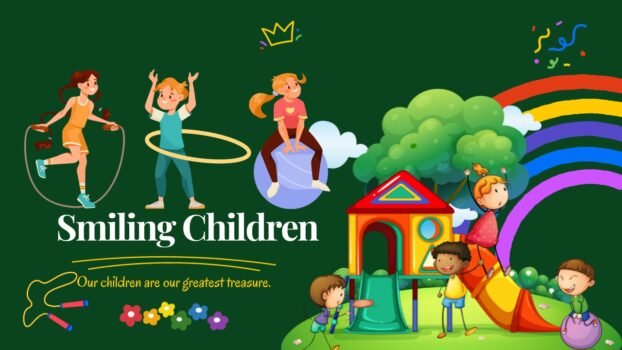Exploring barriers to children’s mental and physical growth: A comprehensive study in 2024.


What are the barriers to children’s mental and physical growth?
Introduction:
The early years of a child’s life are crucial for their overall development, encompassing mental and physical aspects. However, some children may experience challenges that hinder their growth, leading to mental and physical retardation. This blog post aims to shed light on the causes, symptoms, and potential interventions for mental and physical growth retardation in children.
Thank you for reading this post, don't forget to subscribe!I. Defining Mental and Physical Growth Retardation:
Mental and physical growth retardation refers to the delayed development of a child’s cognitive and physical abilities compared to their peers. It is essential to understand that these challenges can be caused by a variety of factors, ranging from genetic conditions to environmental influences.
II. Causes of Mental Growth Retardation:
1. Genetic Factors: Some kids may inherit genetic conditions that affect their cognitive development. Conditions such as Down syndrome, fragile X syndrome, and Rett syndrome are examples of genetic disorders that can lead to mental retardation.
2. Prenatal and Perinatal Factors: Exposure to certain environmental factors during pregnancy, such as alcohol or drug use, infections, and inadequate prenatal care, can contribute to mental growth retardation. Complications during birth, such as oxygen deprivation, can also impact a child’s cognitive development.
3. Environmental Factors: A child’s surroundings play a crucial role in their mental development. Lack of stimulation, inadequate nutrition, and exposure to toxins can contribute to cognitive delays.
III. Causes of Physical Growth Retardation:
1. Malnutrition: Proper nutrition is essential for physical growth. Malnutrition, whether due to inadequate dietary intake or poor absorption of nutrients, can result in stunted growth.
2. Chronic Illnesses: Children with chronic illnesses such as cystic fibrosis, heart conditions, or kidney disorders may experience physical growth retardation due to the impact of their health conditions on overall development.
3. Hormonal Imbalances: Imbalances in growth hormones can affect a child’s physical growth. Conditions like hypothyroidism or growth hormone deficiency can lead to stunted stature.
IV. Recognizing the Signs and Symptoms:
Identifying mental and physical growth retardation early is crucial for effective intervention. Some common signs and symptoms include:
A. Mental Growth Retardation:
1. Delayed Milestones: Children with cognitive delays may achieve developmental milestones, such as walking, talking, or social interaction, later than their peers.
2. Learning Difficulties: Struggles with learning, memory, and problem-solving may indicate mental growth retardation.
3. Behavioral Challenges: kids may exhibit challenging behaviors, such as aggression or withdrawal, as a result of frustration stemming from their cognitive struggles.
B. Physical Growth Retardation:
1. Below-Average Height and Weight: Physical growth retardation often manifests as below-average height and weight for a child’s age.
2. Delayed Puberty: In some cases, delayed puberty may be a sign of physical growth retardation.
3. Lack of Muscle Tone: Poor muscle development and coordination can be indicative of physical growth challenges.
V. Diagnostic Procedures:
When signs of mental or physical growth retardation are observed, it is crucial to seek a comprehensive evaluation by healthcare professionals. Diagnostic procedures may include:
1. Genetic Testing: Genetic tests can identify underlying genetic conditions contributing to mental growth retardation.
2. Developmental Assessments: Cognitive and developmental assessments help identify areas of delay and guide intervention strategies.
3. Nutritional Assessment: Assessing a child’s diet and nutritional status helps identify potential causes of physical growth retardation.
VI. Intervention and Treatment:
Early intervention is key to addressing mental and physical growth retardation. The approach may involve a multidisciplinary team, including healthcare professionals, educators, and therapists. Treatment options may include:
A. Mental Growth Retardation:
1. Early Childhood Intervention: Specialized programs for young children with developmental delays focus on enhancing cognitive, social, and communication skills.
2. Educational Support: Individualized education plans (IEPs) can provide tailored support in educational settings to accommodate a child’s specific learning needs.
3. Behavioral Therapy: Therapeutic interventions help address behavioral challenges and enhance coping skills.
B. Physical Growth Retardation:
1. Nutritional Intervention: A nutritionist can develop a personalized dietary plan to address nutritional deficiencies and promote healthy growth.
2. Hormone Replacement Therapy: In cases where hormonal imbalances are identified, hormone replacement therapy may be recommended to support physical development.
3. Physical Therapy: Physical therapists work with kids to improve muscle tone, coordination, and overall physical development.
VII. Parental and Caregiver Support for mental and physical growth:
Parents and caregivers play a crucial role in supporting children with mental and physical growth retardation. Building a strong support system and fostering a positive and inclusive environment are essential for a child’s well-being.
What is the way to get rid of these barriers?
Overcoming the barriers to children’s mental and physical growth requires a comprehensive and collaborative approach involving parents, educators, communities, and policymakers. Here are some strategies to address and mitigate these challenges:
1. **Promote Physical Activity:**
– **School Programs:** Integrate physical education into school curriculums and promote extracurricular sports.
– **Community Initiatives:** Establish local programs that encourage outdoor play, sports, and recreational activities for kids.
– **Limit Screen Time:** Advocate for responsible use of technology and set limits on screen time to ensure a balance between digital engagement and physical activities.
2. **Ensure Nutritional Support:**
– **Educational Campaigns:** Conduct awareness programs to educate families about the importance of a balanced diet and provide information on affordable and nutritious food options.
– **Community Gardens:** Foster community gardens or collaborate with local farmers to make fresh produce more accessible.
– **School Nutrition Programs:** Implement or support school-based nutrition programs to ensure that children receive nutritious meals during the school day.
3. **Enhance Access to Quality Education:**
– **Policy Advocacy:** Advocate for policies prioritizing education funding, reducing disparities, and ensuring equal opportunities for all children.
– **Technology Access:** Bridge the digital divide by providing technology resources to underserved communities, ensuring that all children have access to online educational resources.
– **Teacher Training:** Invest in teacher training programs to enhance the quality of education and create a positive learning environment.
4. **Address Social and Emotional Challenges:**
– **Mental Health Programs:** Integrate mental health education and support services into school curriculums.
– **Open Communication:** Encourage open communication between parents, teachers, and students to create a supportive environment for addressing mental health concerns.
– **Bullying Prevention:** Implement anti-bullying programs and create a culture of respect and empathy within schools and communities.
5. **Challenge Cultural and Gender Stereotypes:**
– **Diversity Education:** Incorporate diversity education into school curriculums to challenge stereotypes and promote cultural understanding.
– **Inclusive Media:** Advocate for more inclusive representation in media, literature, and other cultural outlets to provide diverse role models for kids.
– **Empowerment Programs:** Support programs that empower children to explore various interests and talents without conforming to traditional gender roles or cultural expectations.
6. **Community Engagement:**
– **Parental Involvement:** Encourage active participation of parents in their children’s education and well-being.
– **Collaboration:** Foster collaboration between schools, community organizations, and local businesses to create a holistic support system for children.
– **Resource Allocation:** Advocate for allocating resources to community initiatives that support children’s development.
7. **Policy Changes:**
– **Advocacy:** Engage in advocacy efforts to influence policy changes that address systemic issues affecting children’s development.
– **Research-Based Policies:** Support policies grounded in research on child development, education, and mental health.
By implementing these strategies, communities can work together to create an environment that nurtures the holistic development of children, ensuring they have the tools and support they need to thrive both physically and mentally.
Conclusion:
Mental and physical growth retardation in children can pose significant challenges, but with early detection and intervention, positive outcomes are possible. Understanding the causes, recognizing signs and symptoms, and seeking professional help are vital steps in supporting children with these challenges. Children can overcome obstacles and reach their full potential through a holistic approach that includes medical, educational, and emotional support.







